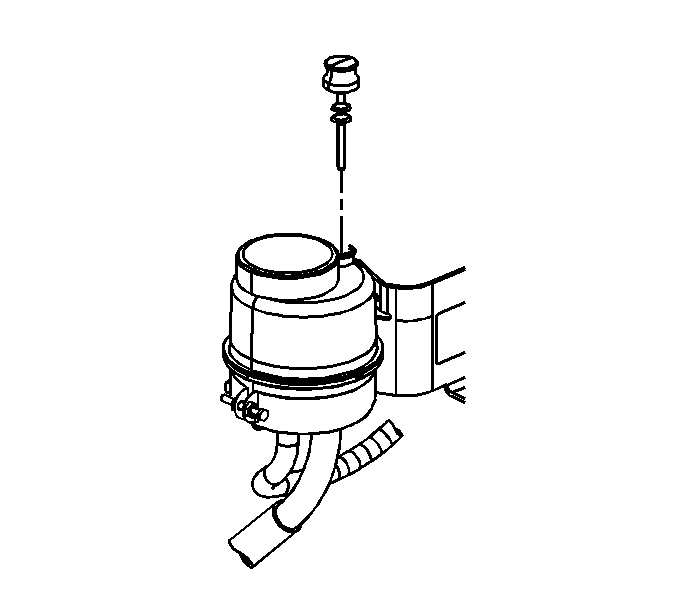Power Steering System Bleeding Manual
Caution: If the power steering system has been serviced, an accurate fluid level reading cannot be obtained unless air is bled from the steering system. The air in the fluid may cause pump cavitation noise and may cause pump damage over a period of time.
Caution: When adding fluid or making a complete fluid change, always use the proper power steering fluid. Failure to use the proper fluid will cause hose and seal damage and fluid leaks.
- Verify that the hoses do not touch any other part of the vehicle.
- Verify that all hose connections are tight.
- Remove the power steering reservoir cap.
- Fill the power steering reservoir with fluid to the MAX line on the reservoir.
- Turn the steering wheel to the right to gain access to the power steering gear.
- Do not turn the steering wheel during the manual bleed process.
- Make sure the wheels are blocked and the park brake is on.
- Start the vehicle and run the engine at low RPM.
- Remove the plug cap from the bleeder screw on the power steering gear.
- Open the bleeder ½-1 revolution so that air in the housing can escape.
- Do not let the reservoir run low on fluid.
- As soon as only oil runs out of the bleeder, close the bleeder.
- Top off the fluid to the MAX line on the reservoir.
- Turn the steering wheel several times, lock to lock.
- Repeat the manual bleed procedure 3-4 times, and turn off the engine 3-4 minutes between each repetition.
- When finished bleeding the system torque bleed screw.
- Drive the vehicle in order to warm the system to operating temperature. Make several turns during the drive.
- Evaluate the vehicle on a smooth, flat surface. Verify the following conditions:
Note: Hoses touching the frame, body, or engine may cause system noise.
Note: Loose connections may not leak, but could allow air into the steering system. Bubbles in the reservoir could mean that the system is pulling in air and the system will not bleed.

Note: Maintain the fluid level throughout the bleed procedure.
Note: Use clean, new power steering fluid only, and avoid getting dirt or contamination into the system.
Caution: Refer to Fastener Caution in the Preface section.
Tighten
Tighten to 27 N·m (20 lb ft).
| • | There is smooth power assist. |
| • | The vehicle operates quietly. |
| • | The pump maintains the proper fluid level. |
| • | There is no leaking in the steering system. |
| • | The fluid is free of foam or bubbles. |
| • | The bleeding procedure is complete. |
